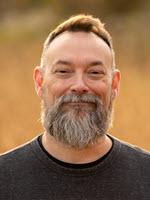

Google Slides is a common tool in the classroom, but is often used for only the common purpose of traditional presentations. However, Google Slides can be a powerful tool for student creativity and communication. The purpose of this session is to show how students of all ages can use Google Slides for creative projects, and educators can create engaging learning opportunities.
Details and examples of these use can be accessed at: https://docs.google.com/document/d/16IdUzpwBS1ouVopUEzdelRChxcZIuVU06C795ObxHuU/edit
In this session we will explore the uses listed below:
Google Slides for creating online comic strips
Google Slides for creating digital storybooks
Non-linear Google Slideshows for creating “Choose Your Own Adventure” stories
Non-linear Google Slideshows for creating interactive games and quizzes
Non-linear Google Slideshows for student choice activities
Google Slides for creating stop-motion animation
Video mashups with Google Slides
Using collaborative Google Slides for students to give and receive peer feedback on their writing
Using Google Slides for drag-and-drop activities, especially useful for younger students
Making slideshow interactive and engaging with the free Pear Deck add-on for Slides
Creating digital soundboards with Slides
The session will cover the following information. Note: live links to the resources referenced below can be accessed at https://docs.google.com/document/d/16IdUzpwBS1ouVopUEzdelRChxcZIuVU06C795ObxHuU/edit
1) Slides for Manipulatives (15 minutes)
We will test out several example slideshows where students can drag and drop and copy and paste items from one slide to another to make creations, solve problems, tell a story, and more. The focus will be on how Slides can be used as a learning tool, and not just a presentation tool.
2) Linear Slideshows (15 minutes)
Tools, features, and best practices for using Google Slides for linear digital storytelling and communicating concepts. This will include comic strips, stories, stop-motion animation, and video mash-ups. Several finished examples will be shared for participants to explore. The participants will also be guided through creating their own sample slideshow story.
3) Non-linear slideshows (15 minutes)
Tools, features, and best practices for using Google Slides for non-linear digital storytelling and activities such as “Choose Your Own Adventure” stories, interactive multimedia quizzes, and student choice boards. Several finished examples will be shared for participants to explore. The participants will also be guided through creating their own sample interactive slideshow.
4) Collaborative Feedback slideshows (15 minutes)
We will explore how a collaborative slideshow can be used for students to write on their own slide, and then leave comments on other slides to give peer feedback on the writing of other students. We will practice this as a group to see how the process works.
5) Interactive slideshows (15 minutes)
We will explore how traditional slideshows can be upgraded with the free Pear Deck add-on. This allows students to interactively participate in a class presentation, making sure all students are engaged, able to share their input, and provide formative feedback.
6) Audio Activities (15 minutes)
We will explore how audio can be added to Google Slides, including recorded voices, sounds, and music. This can be used to provide accommodation support, for audio-based activities (such as language activities), and digital sound boards for class transitions, games, and adding multimedia elements to live stories and content.
Throughout the session, participants will be encouraged to test out the wide variety of sample slideshows, as well as create their own slideshows using the techniques demonstrated.
Google Slides is often cited as a powerful tool for creative teaching and learning by many of the leading educational technology experts. Some examples of edtech leaders and their relevant books would include:
Matt Miller - "Ditch That Textbook"
Jake Miller - "Educational Duct Tape"
Holly Clark and Tanya Avrith - "The Google Infused Classroom"
Bethany Petty - "Illuminate"
In addition, several of the activities and approaches demonstrated in my session are listed as positive influences on student achievement in James Hattie's "Visible Learning" study including:
Creativity programs
Feedback
Reciprocal teaching
Deliberate practice
Providing formative evaluation
Writing programs
Technology in writing
https://visible-learning.org/hattie-ranking-influences-effect-sizes-learning-achievement/